The 10 best places to stargaze in Wales this midsummer

This evening will see many people out catching the sunset in celebration of the summer solstice – and offers a perfect opportunity to take in the power and beauty of the night sky.
Astronomy can inspire awe and wonder about our planet and galaxy, and stargazing is one of the best ways to get outside and connect with nature while learning about celestial objects like comets and meteors.
While the stars can be seen from just about anywhere in the UK, the best sites for astronomical events are usually rural, dark sky locations away from urban life
The darkest moon phases, like a new moon, also provide ideal conditions for watching the stars.
Where to go
Experts from Millets reveal the best places in Wales and the best times of year and nights for astronomers to see the clearest views of the stars.
These locations not only benefit from dark skies but also provide social opportunities, with stargazing groups and scheduled events.
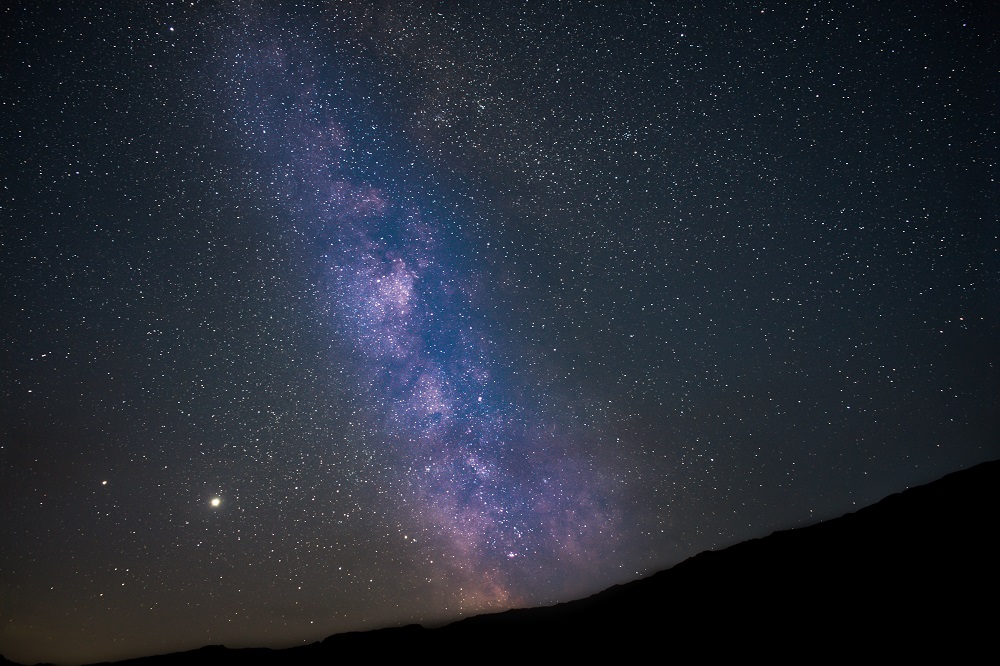
They also look at some expert tips for anyone interested in how to take top quality pictures of the stars.
Best place to stargaze in Wales
The market town of Neath, located in Neath Port Talbot, is the optimal Welsh location for witnessing astronomical events, thanks to its dark skies and low air quality index (AQI).
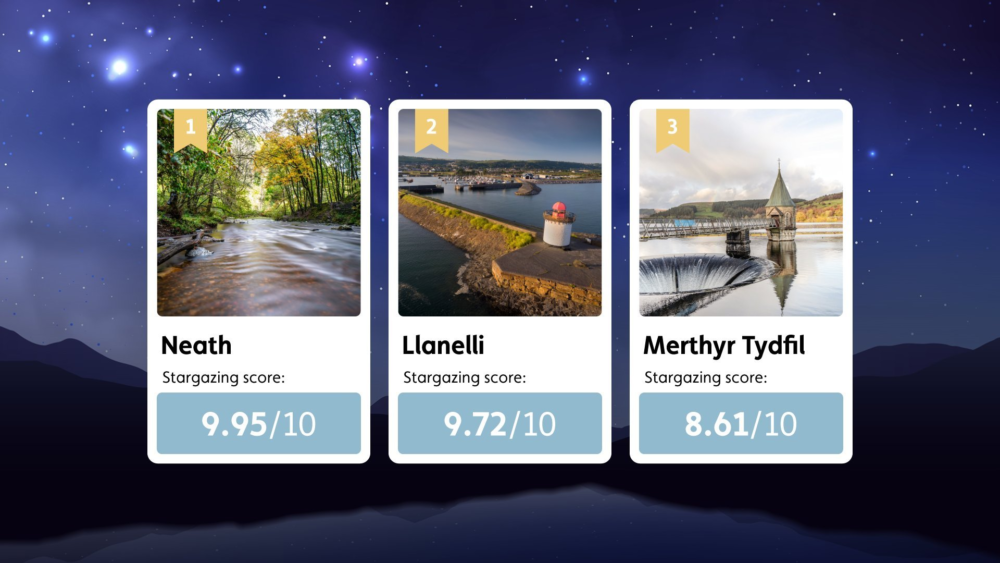
The town is the second darkest of all locations they looked at, with a 1.14 mcd/m2 brightness, second only to Llanelli.
When stargazing, choosing a dark location away from artificial brightness and city lights is ideal for witnessing the stars.
Neath is also among the five Welsh towns and cities with the lowest AQIs.
While Cardiff, Bridgend, and Newport have a lower AQI than Neath, darkness significantly impacts stargazing opportunities more than smog and particulate matter in the air.
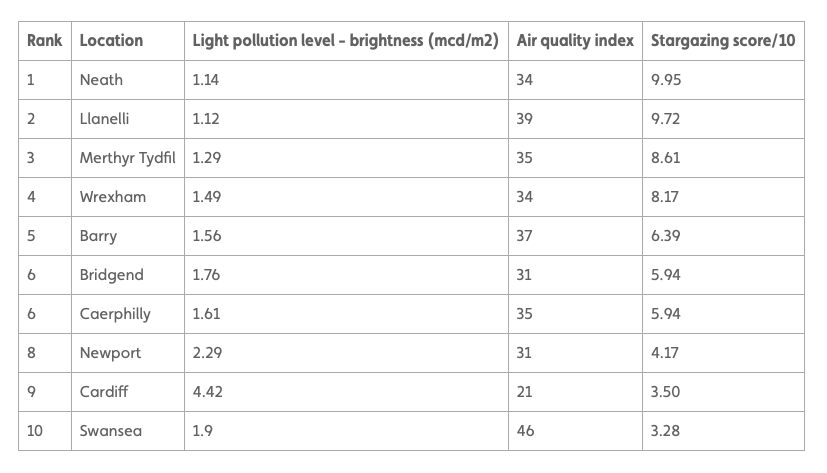
Best county in Wales for stargazing groups
In Glamorgan, keen astronomers can find six stargazing groups for social astronomy opportunities. Glamorgan is home to the Barry Astronomical Society, Bridgend Astronomical Society, and Cardiff Astronomical Society, among other groups.
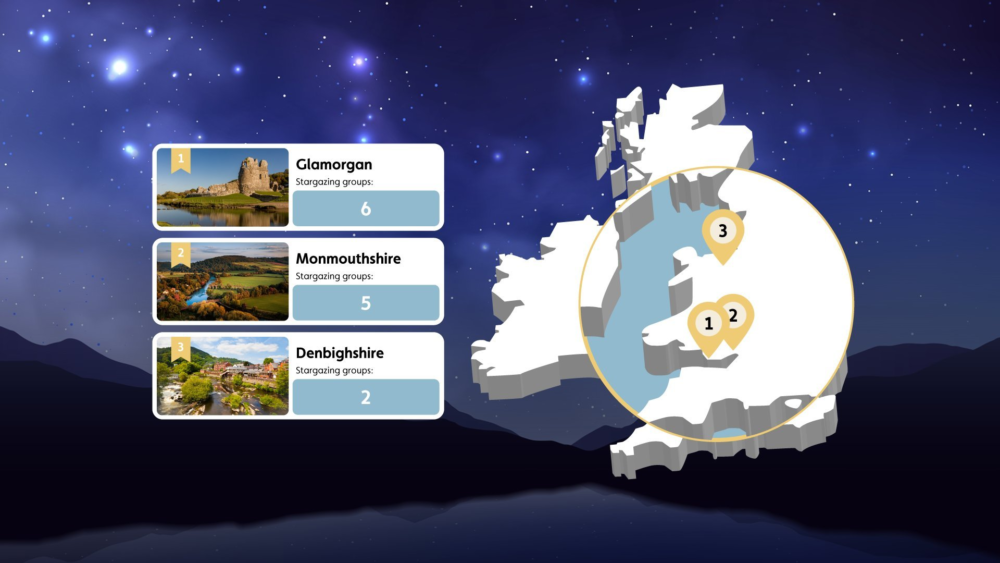
Tips for photographers
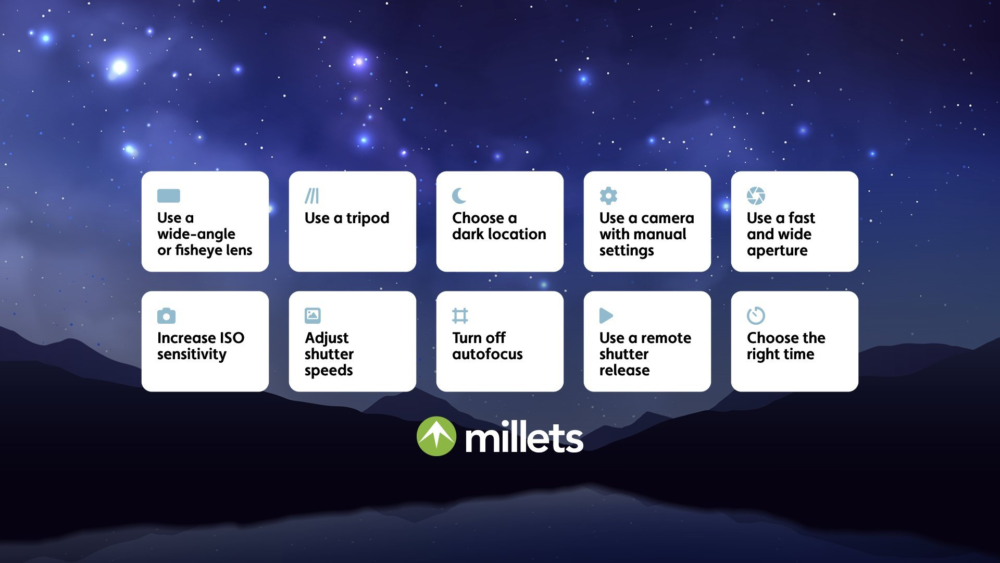
Use a wide-angle or fisheye lens
A wide-angle lens lets you capture as much of the night sky as possible. Although fisheye lenses introduce some optical distortion, this often makes images even more interesting. A rucksack can help you carry all the stargazing and photography equipment you need.
Use a tripod
A sturdy tripod is essential when capturing photos of the stars. Long-exposure images that last 15-30 seconds yield the best results, and your camera must be completely still and stable when capturing these to avoid blurriness.
Choose a dark location
You will get the best results when shooting in a location away from light pollution. This will result in the clearest images.
Use a camera with manual settings
A DSLR camera with manual settings gives you complete control over settings, including aperture, shutter speed, and ISO. This means you can adjust the settings to provide optimal results with some experimentation.
Use a fast and wide aperture
A lens with a wide aperture (low f-stop number) lets more light in, letting you accurately capture even the faintest stars. You should use the widest aperture your lens allows. An aperture at or below f/2.8 is ideal.
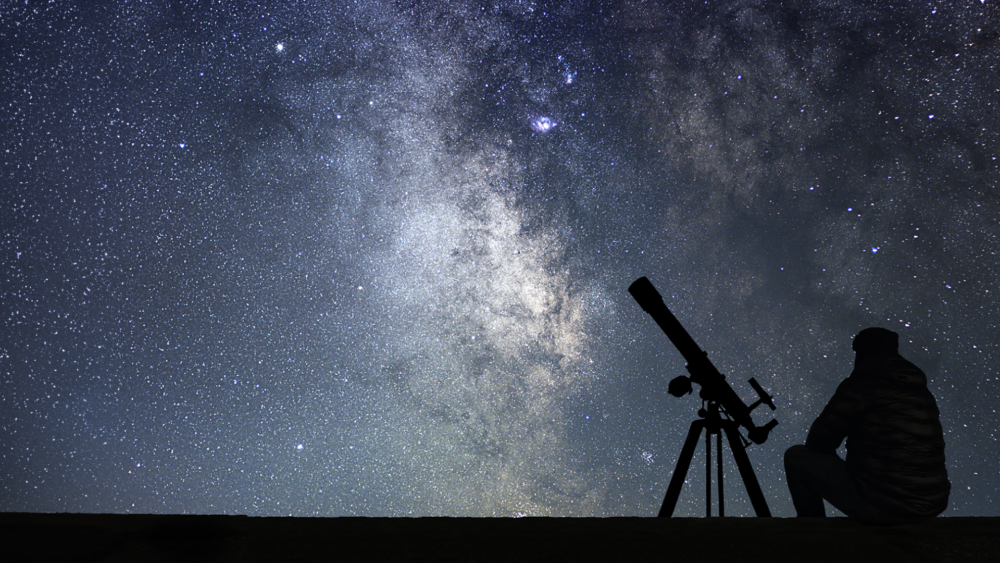
Increase ISO sensitivity
Increasing the ISO sensitivity of your camera makes it more sensitive to light. An ISO of 1600-3200 is an ideal starting point. Full-frame sensors often offer better high-ISO capabilities and fast shutter speeds. If shooting in an area with more light pollution, like a city, you should keep the ISO at around 800 to reduce noise.
Adjust shutter speeds
Setting your shutter speed to around 25 seconds lets you capture the faintest, most distant stars. Any longer than around 30 seconds can lead to blurry results.
Turn off autofocus
Turning off autofocus lets you ensure all the stars in your frame are in focus.
Use a remote shutter release
A remote shutter release or timer can reduce movement resulting from physically pressing the camera button.
Choose the right time
Choosing a good location is a great start, but some nights are darker than others. Nights with the least moonlight offer the darkest conditions for astrophotography.
Clear skies are the perfect conditions for stargazing, but these conditions can also result in much cooler temperatures as the heat escapes the atmosphere more easily.
Make sure you wrap up warmly with a jacket and bring a thermal flask for a quick and convenient source of heat.
Many of our stargazing locations are rural locations with uneven or rocky terrains; always set out with the right kit and bring an appropriate-sized rucksack or bag to carry essentials and spare clothing.
View the full research here.
Support our Nation today
For the price of a cup of coffee a month you can help us create an independent, not-for-profit, national news service for the people of Wales, by the people of Wales.




